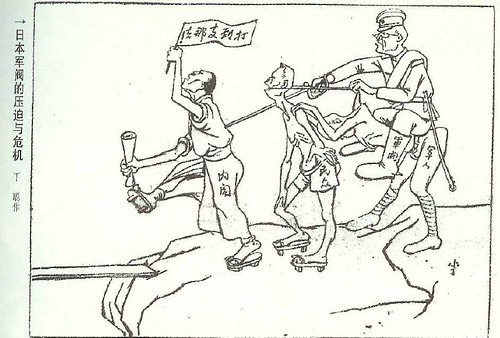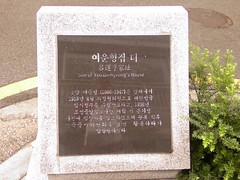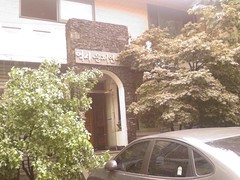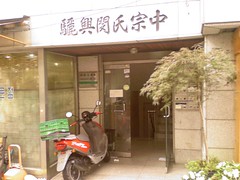Jeremiah from Granite Studio has post about the debate in American universities about the relationship between education and training. Anthony Kronman claims that American universities spend far too little time teaching students about the meaning of life and far too much time doing research and teaching people how to have successfully careers. Kronman claims that our reluctance to teach students the meaning of life has weakened the humanities and made us subject to “being hijacked for political ends” He is particularly hard on how America’s humanities faculty have ceded their position to those in the university who value research and careerism (which is sort of rich coming from the dean of Yale Law School) and longs for the return of the pre-1870 university with its single, coherent curriculum, clear moral sense, and lack of interest in either the German innovation of research or the modern American consumerist idea of students choosing their own majors. Lots of people in America talk like this, but I find most of this sort of rhetoric to be faux-nostalgic blovating. I actually think education as opposed to training is important, and I’m glad places like St. John’s, Wheaton College and Northland exist, and I’m glad many students at other schools learn things beyond preparing for a career, even if they were not planning on it. but I can’t imagine a national Ministry of Higher Education forcing the current American higher-ed system in a pre-1870 direction.
Jeremiah claims that looking at China is worthwhile when thinking about this (which I agree with), and Chinese intellectuals spent an awful lot of time talking about the purposes of education and above all the relationship between education as moral cultivation and education as getting and doing a job. In fact Chinese scholars talked so much about this I am going to limit myself to one figure, Zeng Guofan.1 Zeng one of the most important provincial officials of the mid-19th century and responsible for putting down the Taiping Rebellion and restoring the fortunes of the Qing dynasty. As patriarch of his family he also left a lot of writings about proper education and its purposes. Of course many of the educational debates of the Late Imperial period seem to have little contact with ours. The debate on the role of philosophy vs. literary skill, learning of the mind vs. learning of the heart, etc. all of these seem rather distant to us. Like Anthony Kronman, however Zeng thought education had two purposes, to advance virtue and to prepare for a vocation. In his case the vocation was government service and the gateway to government service was the exams and the 8-legged essay. The 8-legged format could be and was criticized for encouraging students to strip-mine the classics for clever tidbits they could toss into their essays. Some would say it was possible to have a good career without really becoming a good person. Zeng, of course did not see it that way, as he did not draw a sharp divide between exam learning and moral learning. The exams really tested your worthiness, in his view. If you could write a good 8-legged essay you were a good person, and fit for government work.2 If you were successful at learning it would help you even if you were not lucky enough to pass the exams and instead had to work as a private secretary or a teacher.
If the farmer works hard at plowing, there may still be famines, but there will surely be years of good harvest. If the merchant adds to his stock of merchandise, there may be times when sales are slow, but there will surely be times when the market in unimpeded. If the scholar is excellent in his vocation, how could it be that he will never obtain a degree? Even if he never obtains one, are there not other paths to livelihood? Therefore, the problem lies in one’s not being excellent in work.
If you did not want an official career, like his son Qihong, study became even more important as the road to happiness.
Since you are not interested in degrees and positions with emolument, you must read more of the ancient books. You should frequently hum verses and practice calligraphy so as to foster character an sentiment; there will be enjoyment in store for you for your lifetime and to spare
Our modern attempts to make students value study as a road to joy have not seen much success, and I don’t think anyone today sees a direct connection between moral education and landing a job. Zeng certainly did, and would have seen little point to a division between Gen Ed and a major, or worse still a multiplicity of majors. He did recognize the importance of specialization, but in an almost religious sort of way. One should start a text, and read through it carefully, stopping and re-reading any sentences that puzzled you until you understood them and then moving on. On should read only one book at a time. This is entirely different from the way we encourage students to approach texts. We encourage them to mine them for the information they want, molding texts to their purposes rather than assuming that texts are things that they should mold themselves onto
Zeng admonished his family to study, but backed up his words by continuing his studies throughout his life. Like most literati he practiced his calligraphy daily, and throughout the war years he continued work on his Random selections from the Classics, history and various writers. He apparently though that liberal study was part a life-long process of self-cultivation, which is not usual with us. I rather doubt Anthony Kronman is showing up at the freshman seminars at Yale in hopes of becoming a better person and dean.3
This is just China, of course, but I think the Western model of education before 1870 has a lot in common with this. You really can’t have meaning of life education without a common agreement on what the good life is and a society which values those who have learned about it. We just don’t have that and are not going to any time soon. This is a capitalist society, and universities sell what people want to buy Student demand drives what is produced in American Higher Ed, and will for the foreseeable future. I’m glad almost every college in America has some sort of baseline Gen Ed program (our concession to the meaning of life), and while I may disagree with how some of them are run, I also realize that liberal education is a poor sister to the football team and the Law School and always will be. American students will always be able to choose a major, rather than having the proper course decreed for them,
Ours is also at least rhetorically an egalitarian society, and it’s hard to see where the teachers for meaning of life education would come from. For Zeng Guofan this was not a problem. He increasingly came to be free of doubts, and was quite willing to set himself up as a sage, and in fact this was the point of traditional education. As Confucius put it, only the ren can love or hate others, i.e. the point of education is to reach the level where you are a superior being who can judge others. I for one would feel quite reluctant to grade students in a Meaning Of Life class. I can certainly assess how well students can explain the Self-Strengthening movement, or how well they write, but to award someone a B- in Meaning of Life would seem to be antithetical to most of what I think a faculty member should be. Not everyone thinks like this, of course. Nabakov’s vision of a college with “murals displaying recognizable members of the faculty in the act of passing on the torch of knowledge from Aristotle, Shakespeare, and Pasteur” is popular it its way with a lot of faculty but most of them seem to be people like Ward Churchill. Churchill is criticized for politicized teaching, and Kronman claims to oppose that, but I don’t see how you can square non-politicized teaching with knowing the meaning of life. Zeng Guofan certainly thought students were learning how to be better people outside the classroom and would have had no problem judging them on how they behaved outside class.
I think liberal education is important, and I am happy that so many of our students seem to be getting it despite our repeated failures to figure out what it is or how to teach it. I don’t think that abstract wishing for the pre 1870 world is much help, however. While we may draw on old ideas about education and the Good Life we have to think seriously about the context these ideas came out of and how we have to adopt them.
 For years private girls academy Fukuoka Jogakuin in Kyushu has been credited with first introducing in 1921 the famous sailor-style uniform worn by so many middle-school Japanese girls. However a recent investigation by a uniform manufacturer preparing an exhibit on the history of Japanese school uniforms has unearthed photographic evidence that Heian Jogakuin in Kyoto introduced a uniform with a sailor-style flap one year earlier, in 1920.
For years private girls academy Fukuoka Jogakuin in Kyushu has been credited with first introducing in 1921 the famous sailor-style uniform worn by so many middle-school Japanese girls. However a recent investigation by a uniform manufacturer preparing an exhibit on the history of Japanese school uniforms has unearthed photographic evidence that Heian Jogakuin in Kyoto introduced a uniform with a sailor-style flap one year earlier, in 1920. The debate has heated up, with both schools insisting that they were the first and that the other schools claim is invalid. At a time when declining numbers of Japanese children are forcing private schools to become increasingly cuthroat in their competition for students, having an awesome uniform with a storied past is seen as a way to attract students.
The debate has heated up, with both schools insisting that they were the first and that the other schools claim is invalid. At a time when declining numbers of Japanese children are forcing private schools to become increasingly cuthroat in their competition for students, having an awesome uniform with a storied past is seen as a way to attract students.






